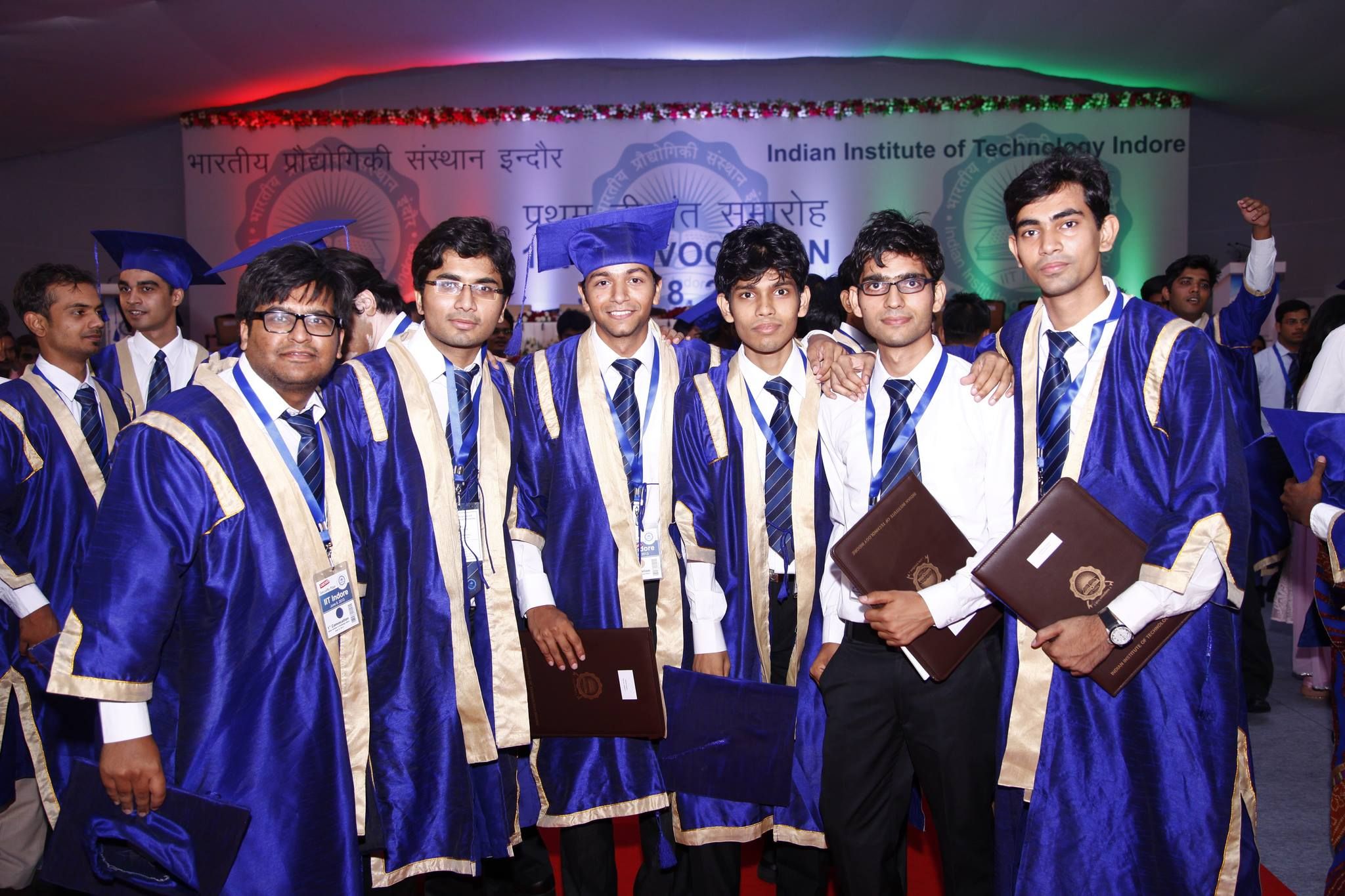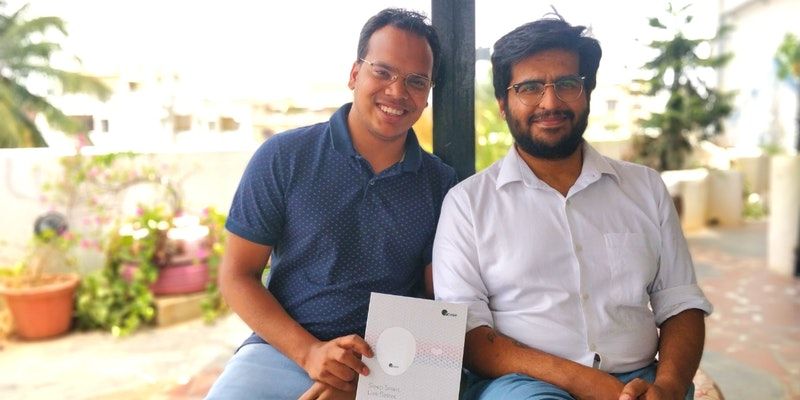Five years after Gaurav Parchani started Turtle Shell Technologies with Mudit Dandwate, he still codes and programs as he did on day one.
“I have always loved solving puzzles and problems. I believe that coding everyday gives me the agility to look at problems and find solutions. The best part about coding is the independence it gives you.
"Something as complex as WhatsApp was built by 18 developers. In fact, most big and successful products start with limited resources and the grit to code,” he says.
But that doesn’t mean that Gaurav doesn’t let his team code. He does his bit while his team that works on building the core product every single day.
Their product, Dozee, a contactless device that tracks sleep patterns, heart, respiration, and stress levels, is now being used to take the fight to coronavirus.
The monitor, which uses ballistocardiography as the underlying technology, generates data that is analysed using advanced machine learning and artificial intelligence algorithms to create users’ health profiles that can be used for preventive healthcare.

Gaurav Parchani, Co-founder and CTO, Dozee
Getting started
An IIT-Indore alum, Gaurav’s love for engineering and technology began early.
“My love for technology and problem solving is inherited from my father, who was a civil engineer and would build large reactor buildings. I would visit construction sites with him; these reactors were different from regular construction sites,” he says.
This furthered an interest in mathematics at school. Coding wasn’t a part of the school curriculum, but it intrigued him and he started learning it on his own in Class 7.
In Class 8, he tried to build a rocket. “I was fascinated by the idea as a child. It is a different story that it almost burst in my face. It was difficult to get chemicals, but we got calcium carbonate from a local welding store and built a combustible gas. It did go up 10 metres,” he recalls.
Gaurav was proficient in the programming language C by the time he was in Class 9. He had started printing and solving around the Fibonacci code and series, and was working on several problems and codes.
“Engineering was a natural choice,” he says, adding that he joined IIT-Indore’s first batch in 2009 and chose the mechanical engineering elective.

Gaurav Parchani during his IIT days
Building products at IIT-Indore
At IIT, Gaurav made like-minded friends and his interest in coding grew.
“We were the first so set up a robotics club, a programming club, and had the freedom to build new structures,” he says.
The combination of mechanical engineering and coding got him interested in hardware and simulation. In 2011, Gaurav interned at Tata Technologies, where he did a comparative study of turbulence models with various mesh sizes in the CFD analysis of air flow over an Ahmed body.
The same year, he also interned at Bhabha Atomic Research Centre, where he simulated a pebble bed reactor in commercial CFD software.
In 2012, his final year, he built an underwater glider. “We wondered if we could remove the problem of pulling and pushing out the water without any effort. We built a telescopic cylinder that compressed and open-compressed the systems. I wrote code on top of the microcontroller to aid the simulation.”

Gaurav Parchani with his batchmates during graduation
Simulation at Altair
In his final year, Gaurav interned at Altair Engineering, where he worked on two projects. One was a response spectrum analysis of an electronic cabinet under seismic load. He worked on this with topography optimisation to increase the natural frequency of the structure, and also designed a windshield wiper.
Gaurav and Mudit worked closely on this, and ended up joining the company in 2013.
“Everything was predominantly math-dependent so we were running simulations. Look at crash simulations; they take almost 24 to 30 hours on a high-power computing network to learn to run, and exist just 30 seconds. Even that short time frame has its value. Without them a car company would have to work on so many prototypes,” he says.
It was here that Gaurav worked on building products for the real world.
“The good thing was you build a new product, pitch to the client, get it running, make sure there are no problems, and give the knowledge cycle to the sales team. It was a mini entrepreneurial training – building something and taking it to market. There were no silos and it gave my coding another perspective,” he says.
At Altair, Gaurav was part of multi-physics teams and worked on two projects. One was to introduce multi-body dynamics in the finite element analysis domain. He worked on migration of different multi-today domain entities. He also developed new features for topology optimisation, wrote automated testing scripts, and more.
“I also wrote code for exporting a new solver deck from the pre-processor motion view. These were required for Design Sensitivity Analysis and designing the User Interface for the product.”
The startup bug
By 2015, Gaurav felt he was settling into a monotonous routine. He decided to do a master’s course and got through Carnegie Mellon University. During this time, Mudit and Gaurav often had conversations and spoke about taking risk to do something different.
“We were confident of our ability. Altair gave us that exposure and we had built things for the market. Unlike college, where the focus is on getting one test right, at Altair we understood the need for multiple tests, simulations, designs, and feedback,” he says.
The duo decided to defer their admission for a year, and began thinking of problems. “We thought if it worked, we could give it a decade of our lives minimum,” Gaurav says. That deferment has been five years now, and the duo are happy building Dozee at the moment.
Numerous conversations led them to realise that the entire world follows a reactive approach to healthcare. “We opt for clinical intervention only when things go wrong. We thought of building something for early intervention.”
In October 2015, they began studying sleep disorders. They believed sleep monitoring was essential, as lack of sleep is often the root cause of several other problems. The problem was one: capturing and processing data.
“We started by capturing data accelerometers placed on the mattress. On the processing side, I was playing around with traditional machine learning algorithms to track data heartbeats. We worked with premium research institutes such as NIMHANS and Sri Jayadeva Institute of Cardiovascular and Research.”

Mudit Dandwate (L) and Gaurav Parchani: the Co-founders of Dozee
The Dozee story
Today, Dozee, which was launched in India in 2019, has proved to be 98.4 percent as accurate as medical-grade devices. Amidst the COVID-19 pandemic, over 1,200 Dozees have been deployed in more than 20 quarantine centres across eight states. The product has so far monitored over 4,000 COVID-19 patients in institutional settings, saving more than 6,000 nursing hours.
"We have four patents pending for our technology, and intend to get more approvals and apply for patents abroad,” Gaurav says.
The team is looking to expand market reach, develop real-time vital signs monitoring on its device, and accelerate adoption of its device.
What does this techie look for while hiring young techies? “I look for a person who is a techie at heart. Problem solving should be above everything else. If a problem isn’t solved, does it bother you and give you sleepless nights? They need the same respect for a problem as our team has. Hunger to learn is another important thing; it is inbuilt.”
His advice to techies? “Keep finding problems that you believe in and work till you solve them. Don’t take up something because it is glamorous or is the new buzz word. Go for it if you truly believe in it.”
Edited by Teja Lele Desai
Link : https://yourstory.com/2020/12/techie-tuesday-contactless-health-monitoring-startup-cto-gaurav-parchani
Author :- Sindhu Kashyaap ( )
December 15, 2020 at 05:15AM
YourStory





